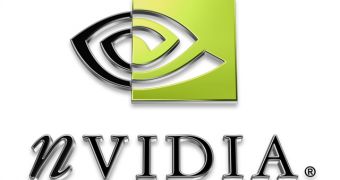A company that has seen a lot of financial revenue these days is NVIDIA, they took advantage of AMD's hook-up with ATI and manufactured chipsets for both enemy sides, AMD and Intel alike. Also, being a fabless company, that allows them to operate at the lowest possible costs, and leave the labor on somebody else's shoulders. I'm thinking if this ordeal will ever backfire on NVIDIA, I mean, they are now plotting with both sides, and by doing so, they could be persuaded to create less-than-perfect designs for either side, if the opportunity rears its ugly head.
That means they will alienate one of the sides, and that wouldn't be to their advantage. Best thing would be for them to supply all of the needy with what their hearts desire. And they still have a battle to be fought with ATI, which is going to release the R600 soon, and seeing how the mainstream and high-end markets aren't being covered by Intel, their offers including the entry level market and especially the integrated graphics, they aren't a worthy threat, not yet anyway.
And in their probably only concern at the time being, the pursuit of overcoming ATI with their video cards, there is talk of launching the NVIDIA 8800Ultra video card on the 1st of May, to counter ATI's offer. Also, their other products, the NVIDIA 8600GTS, 8600GT and 8500GT will launch on the 17th of April, and more information is now available about these cards. So I'm going to sum it up by presenting all facts about these cards, both old and new.
The NVIDIA 8600GTS is built on the 80nm process node, has 32 stream processors, has a power consumption of 71W, has 289 million transistors in their GPU; the core clock runs at 675Mhz, it uses 256MB GDDR3 at a 1000MHz memory clock (2000Mhz) on a 128-bit wide memory interface, allowing it to achieve a maximum bandwidth of 32GB/s. The shader clock for this model is 1450MHz and the price tag goes in between $199 and $229.
The second one in the series is the NVIDIA 8600GT, it also has 32 stream processors, like the 8600GTS, the same transistor count and manufacturing technology, but that's where the similarities stop. It uses 256 MB GDDR3, a 540MHz core clock and 700MHz memory clock (1400MHz) with a 22.4GB/s data bandwidth on a 128-bit memory interface. The shader clock for this model runs at 1180MHz, the power consumption is of 43W and the price range it is targeting is around $149 - $159.
The last, but not least, is the NVIDIA 8500GT. Built on the same 80nm process node, it features 16 stream processors, a choice of either 128 or 256MB of DDR2 memory running at 700MHz (1400MHz), with a GPU made out of 210 million transistors and a 450MHz core clock. The shader clock is of 900MHz, it draws 40W of power and has a price range of $89 to $129.
Alongside these cards, NVIDIA will also launch the 8800Ultra on the 1st of May, which is a single GPU successor of the 8800 series of video cards, with a price tag of $999.

 14 DAY TRIAL //
14 DAY TRIAL //